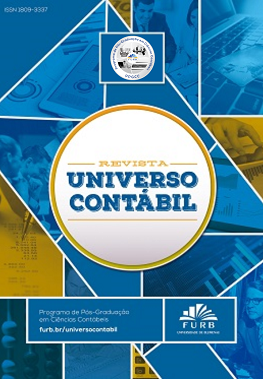USING TECHNOLOGY DRIVEN FLIPPED CLASS TO PROMOTE ACTIVE LEARNING IN ACCOUNTING
Keywords:
Inverted classroom, Flipped classroom, Undergraduate education, Accounting.Abstract
The flipped classroom is a pedagogical model that occurs when students become active learners and study the class content previously as homework. The new generation of students is more engaged with the intensive use of technology and increased collaborative learning. However, there are few studies about the flipped classroom method which uses technology and active methodologies resulting in better engagement and improvement in student performance. This study aims to investigate the performance gain during the class and the students' perception of the use of the enhanced flipped classroom approach. Two accounting undergraduate classes with the same curriculum content, attending the research methodology course, had four classes using the flipped classroom approach. The sample consisted of 78 students from a public university in Brazil. Each flipped class began with a homework assignment; in addition, students should post and vote for their difficulties related to the assignment before class. In each class, there were two tests based on the most voted questions and collaborative activities between them without the help of the professor. The test results showed that in all flipped classes, there was a vast improvement after the collaborative activity being included as part of the process of knowledge construction. In addition, a survey was conducted with students and the results showed that they approve the use of enhanced flipped classroom as an appropriate teaching strategy. Universities should encourage the use of active methodologies and technological resources as a means of improving the educational processes.
Downloads
References
AL-ZAHRANI, A. M. From passive to active: The impact of the flipped classroom through social learning platforms on higher education students’ creative thinking. British Journal of Educational Technology, v. 46, n. 6, p. 1133-1148, 2015.
ALROWAIS, A. S. The Impact of Flipped Learning on Achievement and Attitudes In Higher Education. v. 4, n. 1, p. 1914–1921, 2014.
BLAIR, E.; MAHARAJ, C.; PRIMUS, S. Performance and perception in the flipped classroom. Education and Information Technologies, 2015.
BOUWMEESTER, R. A. M. et al. How Do Medical Students Prepare for Flipped Classrooms? Medical Science Educator, 2015.
BUTT, A. Classroom Approach : Evidence From. Business Education & Accreditation, v. 6, n. 1, p. 33–44, 2014.
COHEN, J. The t test for means. Statistical power analysis for the behavioral sciences. New Jersey, LEA, 1988.
COTTELL, P. G.; MILLIS, B. J. Cooperative learning in accounting. Journal of Accounting Education, v. 10, n. 1, p. 95–111, 1992.
DAVIES, R. S.; DEAN, D. L.; BALL, N. Flipping the classroom and instructional technology integration in a college-level information systems spreadsheet course. Educational Technology Research and Development, v. 61, n. 4, p. 563–580, 2013.
DEWEY, J. The Philosophy of John Dewey. 2. ed. Chicago: The University of Chicago Press, 1981.
DIRIENZO, C.; Lilly, G. Online versus face-to-face: Does delivery method matter for undergratuate business school learning? Business Education & Accreditation. v. 6, n. 1, p. 1-11, 2014.
ENGIN, M. Extending the flipped classroom model: Developing second language writing skills through student-created digital videos. Journal of the Scholarship of Teaching and Learning, v. 14, n. 5, p. 12, 2014.
FINDLAY-THOMPSON, S.; MOMBOURQUETTE, P. Evaluation of a flipped classroom in an undergraduate business course. Business Education & Accreditation, v. 6, n. 1, p. 63–71, 2014.
HATTIE, J. A. C.; TIMPERLEY, H. The power of feedback. Review of Educational Research, v. .77, n. 1, p. 81–112, 2007.
HOLMES, M. R. et al. Moving from Flipcharts to the Flipped Classroom: Using Technology Driven Teaching Methods to Promote Active Learning in Foundation and Advanced Masters Social Work Courses. Clinical Social Work Journal, p. 215–224, 2015.
HWANG, G.-J.; LAI, C.-L.; WANG, S.-Y. Seamless flipped learning: a mobile technology-enhanced flipped classroom with effective learning strategies. Journal of Computers in Education, v. 2, n. 4, p. 449–473, 2015.
LARSON, S.; YAMAMOTO, J. Flipping the College Spreadsheet Skills Classroom : Initial Empirical Results. v. 4, n. 10, p. 751–758, 2013.
MORAROS, J. et al. Flipping for success: evaluating the effectiveness of a novel teaching approach in a graduate level setting. BMC medical education, v. 15, p. 27, 2015.
PHILLIPS, CYNTHIA, R.; TRAINOR JOSEPH, E. Millennial Students and the Flipped Classroom. ASBBS Annual Conference. Anais...2014
ROEHL, A.; REDDY, S. L.; SHANNON, G. J. The flipped classroom: An opportunity to engage millennial students through active learning strategies. Journal of Family & Consumer Sciences, v. 105, n. 2, p. 44–49, 2013.
WASSERMAN, N. H. et al. Exploring Flipped Classroom Instruction in Calculus III. International Journal of Science and Mathematics Education, 2015.
WAYNE, D. B. et al. Mastery learning of advanced cardiac life support skills by internal medicine residents using simulation technology and deliberate practice. JOURNAL OF GENERAL INTERNAL MEDICINE, v. 21, n. 3, p. 251–256, mar. 2006.
WEIL, S. et al. A study of students’ perceptions of the usefulness of case studies for the development of finance and accounting-related skills and knowledge. Accounting Education, v. 10, n. 2, p. 123–146, 2001.
WEIL, S.; FRAMPTON, C. Cultural and other influences on student perceptions of the use of case studies and study groups in management accountingLloydia (Cincinnati): 62. New Zealand: [s.n.].
WONG, K.; CHU, D. Is the Flipped Classroom Model Effective in the Perspectives of Students’ Perceptions and Benefits? 7th International Conference on Hybrid Learning. Theory and Practice. ICHL 2014, p. 93–104, 2014.
Downloads
Published
How to Cite
Issue
Section
License
The copyright for papers published in this journal belong to the author, with rights of first publication for the journal. As the papers appears in this publicly accessed journal, the papers are for free use, receiving their credit, in educational and non-commercial uses. The journal will allow the use of the papers published for non-commercial purposes, including the right to send the paper to publicly accessed databases.


